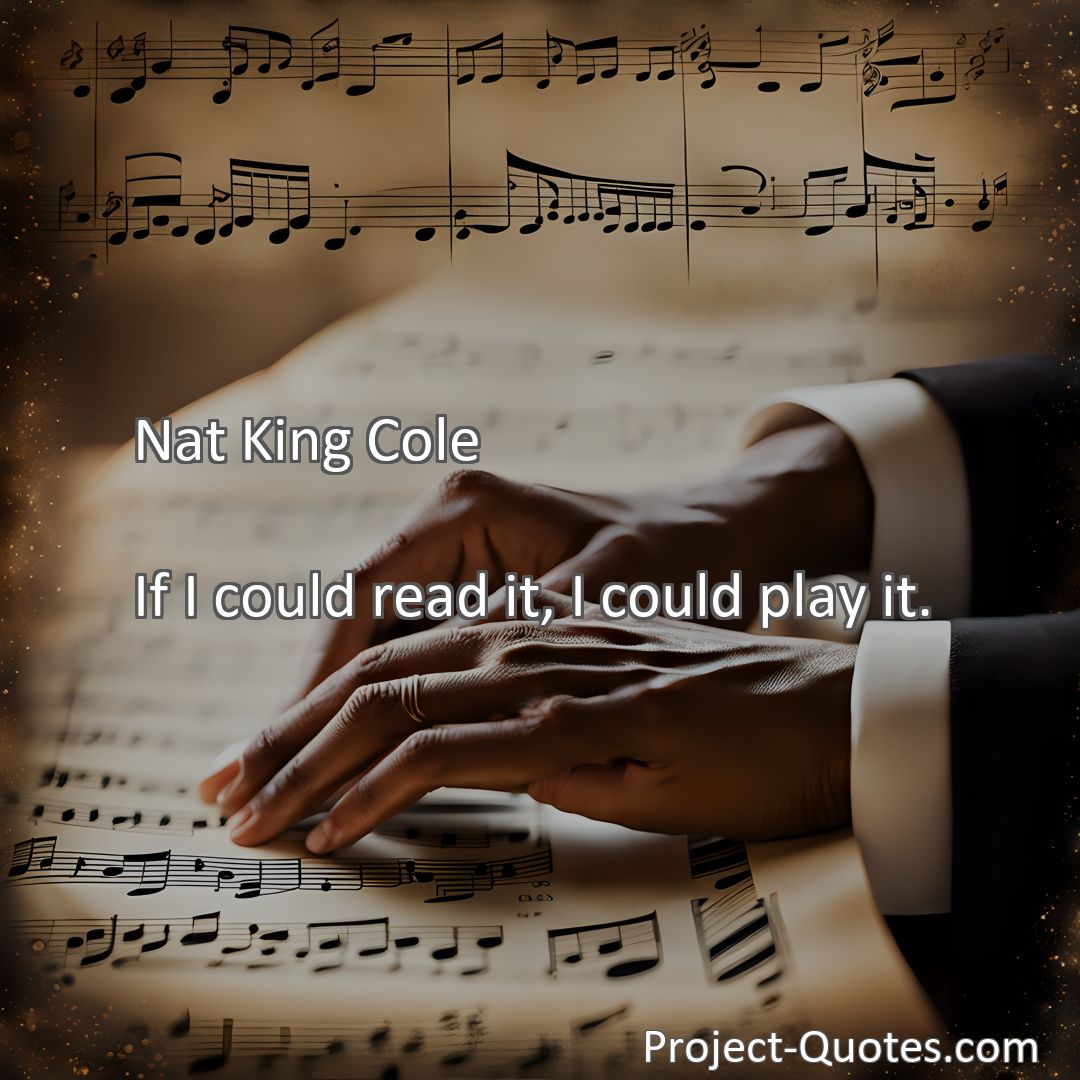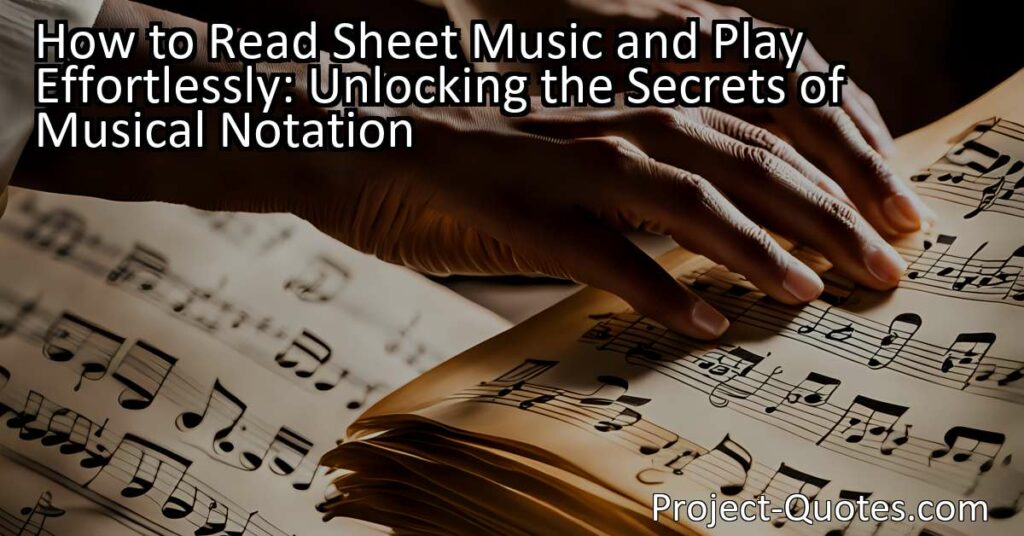If I could read it, I could play it.
Nat King Cole
Learn to read sheet music and play effortlessly with this engaging guide. Discover the basics of music notation, from understanding note pitches and durations to interpreting dynamics and expression markings. By unlocking the secrets of sheet music, you’ll be on your way to becoming a confident musician, bringing beautiful melodies to life with ease.
Table of Contents
Meaning of Quote – If I could read it, I could play it.
Have you ever come across a book filled with musical notes and wondered how on earth you could make sense of all those dots and lines? Have you ever wished you could just read the music and play it effortlessly, bringing beautiful melodies to life? Well, let me assure you that if you can read it, you most certainly can play it!
Imagine holding a piece of sheet music in your hands, its pages filled with various symbols, curves, and lines. At first glance, it may seem like a complex and confusing puzzle. However, with a bit of practice and understanding, you’ll discover that reading music is like deciphering a secret code that unlocks a world of musical possibilities.
When you first encounter sheet music, the key is to focus on the basics. Each note represents a different pitch or sound, and it is these notes that come together to create melodies and harmonies. Just like learning to read words, start by familiarizing yourself with the musical alphabet A, B, C, D, E, F, and G. These letters represent the different pitches in music, and they are arranged in a specific order on the musical staff.
The musical staff acts as a framework for organizing the notes. It consists of five lines and four spaces, each assigned to a particular pitch. By placing notes on different lines and spaces, musicians can indicate which pitch to play. Without this organized system, it would be nearly impossible to interpret and reproduce the music accurately.
As you begin to recognize the pitches and their corresponding notes, it’s important to understand the duration or length of each note. Just like words in a sentence have varying lengths, musical notes also have different durations. This information is conveyed through symbols such as whole notes, half notes, quarter notes, and so on. By recognizing these symbols, you can determine how long each note should be held or played.
Now, let’s dive a little deeper into the concept of reading music and playing it smoothly. As you progress, you’ll encounter various additional symbols that enhance and nuance the music. For instance, there are time signatures that indicate the beats per measure and dictate the rhythm of the piece. By understanding these symbols, you’ll be able to internalize the rhythmic structure of the music and play it with accuracy and precision.
In addition to time signatures, dynamics markings are another crucial aspect of reading and playing music. These markings indicate the volume or intensity at which certain sections should be played. They range from soft (piano) to loud (forte), and everything in between. Mastering dynamics allows you to bring life and emotion to your performances, ensuring that the music truly resonates with the listener.
Furthermore, expression markings provide valuable insights into how a piece should be performed. These marks, including symbols like legato (smooth and connected) or staccato (short and detached), guide you in shaping the music to convey the composer’s intent. They encourage you to infuse your own artistic interpretation, making each performance unique and personalized.
Now, it’s important to acknowledge that mastering the art of reading and playing music is not an overnight process. It requires patience, dedication, and consistent practice. Just as you would approach any new skill, take it one step at a time and break down the music into manageable sections. Focus on understanding each component before moving on to the next. By taking this approach, you’ll gradually expand your musical knowledge and become more confident in your ability to tackle increasingly complex pieces.
Remember, the beauty of music lies in its universality. Regardless of your age, background, or experience, if you can read the music, you can play it. Music transcends language barriers and is a form of expression that can be appreciated by anyone willing to give it a try. So, regardless of whether you aspire to become a virtuoso pianist or simply want to strum a few chords on the guitar, don’t let the intricacies of sheet music discourage you. Keep persevering, and you’ll discover a whole new world of possibilities waiting to be explored.
In conclusion, the quote “If I could read it, I could play it” holds profound wisdom. Learning to read and interpret sheet music opens countless doors and allows you to bring beautiful melodies to life. By understanding the basics of music notation, from notes and durations to dynamics and expression markings, you’ll be well on your way to becoming a confident musician. So, pick up that sheet music, embrace the challenge, and let the language of music guide you on a remarkable journey of creativity and self-expression.
I hope this quote inspired image brings you hope and peace. Share it with someone who needs it today!


